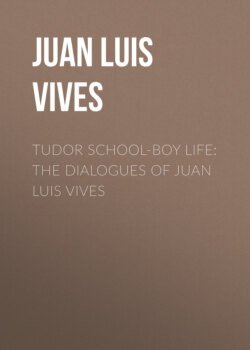Читать книгу Tudor school-boy life: the dialogues of Juan Luis Vives - Juan Luis Vives - Страница 8
Contents of the Dialogues
ОглавлениеThe German historian of Latin School-Dialogues, Dr. Bömer, speaks of the characteristic power of Vives in introducing, in relatively short space, the ordinary daily life of boys, and tracking it into the smallest corners. “If a boy is putting on his clothes, we learn every single article of clothing, and all the topics of toilettes and the names of each object (Dialogues I. and XI.). When two school-boys pay a visit to a stranger’s house, we have shown to us its whole inner arrangement by an expert guide (XII.). Interesting observations are made on the different parts of the human body by a painter, Albert Dürer (XXIII.). With a banquet as the occasion, we are introduced to the equipment of a dining-room (XVI.), with ordinary kinds of foods and drinks (XVII.), and if we like we can betake ourselves to the cook in the kitchen and watch the direction of operations (XV.).xxiii We are told in another Dialogue (XVIII.) of a man’s fear to go home to his wife after too liberal a banquet, and how she would entertain him with longer homilies than those of St. Chrysostom. When a company of scholars wish to make a distant excursion, all kinds of horses and carriages, with their trappings, are presented to the notice of the reader (IX.).”6 Then, to show us life under the most favourable of circumstances, Vives gives a dialogue on the King’s Palace (XIX.).
Whilst the general environments of boys’ lives are thus pourtrayed in considerable detail, Vives is particularly careful to show boys the general features and significance of home and school life, and regards it as part of his duty to expound, in the last two dialogues, some general guiding principles of education for the boys, their teachers, and readers of the book to ponder over.
